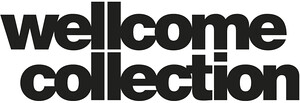How we see animals
December 1, 2016–May 21, 2017
183 Euston Road
London NW1 2BE
United Kingdom
Hours: Tuesday–Sunday 10am–6pm
T +44 20 7611 2222
info@wellcomecollection.org
How we think about animals is fundamental to how we understand ourselves and our place in the world. Making Nature, opening at Wellcome Collection in December 2016, brings together over 100 objects from literature, film, taxidermy and photography to examine what we think, feel and value about other species and the consequences this has for the world around us.
Including works by contemporary artists Edwina Ashton, Allora & Calzadilla, Marcus Coates, herman de vries, Richard Ross, Hiroshi Sugimoto and Philip Warnell, this exhibition asks how and why we look at animals and what we see when we do.
From the formalisation of natural history as a science, through the establishment of museums and zoos, to lavish contemporary wildlife documentaries, Making Nature reveals the hierarchies in our view of the natural world, and considers how these influence our actions, or inactions, towards the planet.
With the rapid loss of habitats and species threatening the health of our planet, the historical roots of our beliefs about other animals are coming under scrutiny. Is the separation of humans from other animals—both in our minds and our environments—compatible with creating a sustainable world?
The exhibition opens with Marcus Coates’ Degreecoordinates, Shared traits of the Hominini (Humans, Bonobos and Chimpanzees), 2015, which questions the definitions of difference between species and exposes the importance of cultural boundaries.
Making Nature questions the approach of “learning through looking,” including artists such as herman de vries, a trained botanist interested in the challenge of objectivity, and Edwina Ashton who explores the politics of representation. The importance of listening is also examined by artists Allora & Calzadilla in The Great Silence, 2014, a film installation depicting endangered parrots paired against footage of the Arecibo Observatory, one of the world’s largest telescopes, in Puerto Rico.
Contemporary photographers Richard Ross and Hiroshi Sugimoto expose the complexities of successive attempts to give visitors an authentic representation of the animal in a museum setting, revealing works of art as yet another form of mediation. Phillip Warnell’s film installation Ming of Harlem: Twenty One Storeys in the Air, 2016 explores the true story of Antoine Yates, who lived in a high-rise New York apartment with a tiger called Ming and a large alligator. Combining documentary with recreated scenes, Warnell offers new insights on the human/animal relationship and the question of representation.
The final section of the exhibition is curated in collaboration with the Center for PostNatural History, Pittsburgh, USA, the only organisation to solely collect organisms that have been intentionally altered by humans. Specimens, paintings, literature and scientific models, many on loan from the Center’s museum, chart a relationship to animals that is bound up with the history, and future, of human civilisation. This includes the breeding of domesticated pigeons by Charles Darwin that helped to inform his theories of natural selection and the genetic modification of mosquitos in the fight against disease spread. Further case studies include dog breeding, the origins of laboratory mice and rats, and a history of songbirds as told by musicologist Ian Nagoski. Unlike traditional natural history collections, the significance of postnatural organisms lies in the role they play in human culture.
Wellcome Collection is the free visitor destination for the incurably curious. Located at 183 Euston Road, London, it explores the connections between medicine, life and art in the past, present and future. The venue offers visitors contemporary and historic exhibitions and collections, lively public events, the world-renowned Wellcome Library, a café, a shop, a restaurant and conference facilities as well as publications, tours, a book prize, international and digital projects. Wellcome Collection is part of Wellcome.



